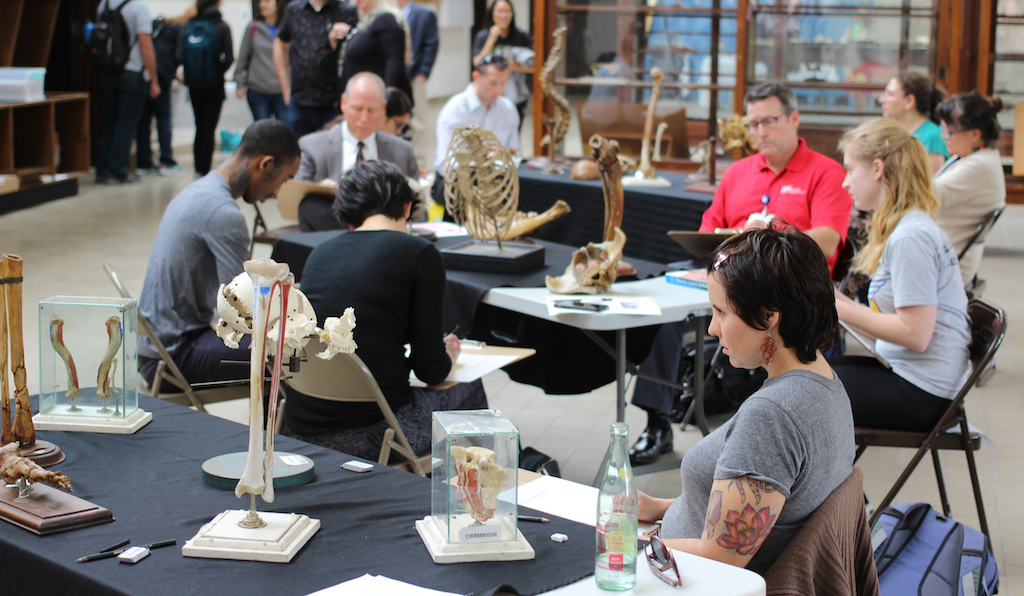
Students, faculty and members of the Galveston arts community recently took advantage of a rare opportunity to go inside the top floor of UTMB’s Ashbel Smith Building, known as “Old Red,” on the Galveston Campus for the “Drop in and Draw Bones: The Art of Anatomy” event. More than 90 visitors filled the third floor space, which had tables displaying real human specimens including skulls, a spinal cord, hand, foot and leg bones.
“It’s incredible that we have some of Dr. William Keiller, UTMB’s first anatomy professor’s, hand-painted specimens,” said Paula Summerly, PhD, a research project manager with the John P. McGovern Academy of Oslerian Medicine. “I have photographed and created an inventory of his drawings—part of UTMB’s unique medical heritage collection of about 2,000 specimens.”
Event attendees had the opportunity to let their artistic skills flow as they studied and drew the historical, anatomical and pathological specimens on display. Huy Nong, a first-year UTMB medical student, was fascinated by the bone collection and history of Old Red, which is the oldest medical school building in Texas.
“It’s very interesting to think that students learned anatomy here and did their dissections of human cadavers,” said Nong. “I think it’s a completely different experience than what we have today in anatomy.”
Nong and his friend Lillian Chen became interested in the event after seeing posters and advertising around campus. Chen, also a first-year medical student, said drawing bones can be fun and educational.
“We get to better appreciate the anatomical features by drawing,” said Chen. “Most of the time, we’re in dissection classes and concerned about broad-level aspects. During this event, we were able to focus on the minute details like spine curvatures and appreciate them more.”
Lisa Cain, PhD, is director of the UTMB Medical School Enrichment Program and an associate professor in the Department of Neuroscience and Cell Biology. She teaches gross anatomy and also paints in her spare time. Cain believes drawing helps medical students to reinforce their knowledge of anatomy.
“Looking at art will increase your ability to view in detail,” she said. “It slows down your process of observation and makes you look at the subtle images that are associated with art and the human body.”
Dr. José Barral, PhD, University of Texas Distinguished Teaching Professor, also works in Neuroscience and Cell Biology and teaches gross anatomy. He encouraged students at the event to spend more time drawing and exploring their artistic talents.
“I think it will help students to advance their knowledge,” said Barral. “When you’re concentrating, drawing and looking at the intricate details of a muscle or bone, you have more of a tendency to retain what you’ve seen.”
This first drop-in-and-draw event at Old Red was a partnership of the Galveston Arts Center, the Old Red Medical Museum Task Force and the John P. McGovern Academy of Oslerian Medicine. Organizers hope the event brings more attention to the history of Old Red and UTMB’s historical medical heritage collections.